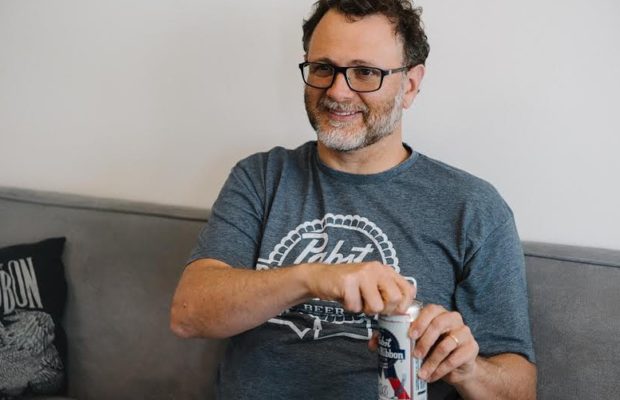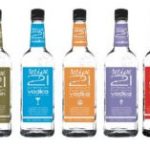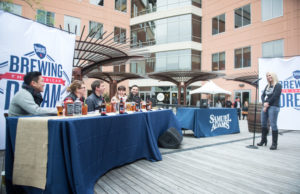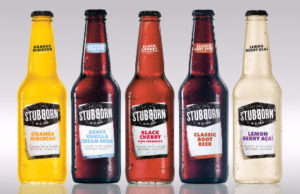Opinion: How Pabst is taking on Big Beer, craft beer and imported beer all at once

Pabst Brewing Co. isn’t a big light-lager brewer, it isn’t a craft brewer, it isn’t an importer and it isn’t a marketer.
It’s all of those things at a time when beer needs them equally.
When former Oasis Beverages Chairman Eugene Kashper and San Francisco-based private-equity firm TSG Consumer Partners (which once owned stakes in Pop Chips, Vitamin Water and Arrowhead Mills, among others) purchased Pabst Brewing for a combined $700 million in 2014, it was a lump of disorganized potential.
The company held the rights to number of legacy beer brands — including Lone Star, Stroh’s, Old Style, Natural Bohemian and Old Milwaukee — and was riding high on the re-emergence of Pabst Blue Ribbon. However, attempts to revive the Schlitz and Ballantine IPA brands with their original recipes met with mixed results, and the library of legacy brands didn’t address the areas where the beer industry was growing fastest: craft and imported beer.
Many of its below-premium brands are still being brewed by MillerCoors under agreements that dated back to 1999 (before MillerCoors existed and the contract was strictly with Miller) and most recently in 2007 (after which Pabst changed owners twice). Pabst and MillerCoors recently had a legal squabble over the future of that agreement — after MillerCoors closed a brewery and Molson Coors bought SABMiller’s portion of their MillerCoors joint venture — but Pabst has been kept busy with other, more heartening endeavors.
In March of last year, Pabst partnered with Illinois-based Small Town Brewery to distribute its Not Your Father’s Root Beer brand nationally. Kashper later bought a stake in the brewery, and a year later the Not Your Father’s line was the sixth-largest craft brand in the country, according to IRI Worldwide, with more than $104 million in sales from cases selling at $43.50 a pop compared with $32 for Samuel Adams and $38 for Lagunitas.
Since the Small Town deal, Pabst has announced partnerships with Woodchuck Cider maker Vermont Hard Cider, Montana brewer Dog Tag, Chinese brewer Tsingtao, Mexican craft brewer Minerva and longtime Michigan craft brewer New Holland. It has constructed a pilot brewery at its former home in Milwaukee, opened offices in Texas to tap into Lone Star’s market, introduced revitalized versions of Rainier, Old Style and Stroh’s, and used excess brewing capacity from the Craft Brew Alliance, North American Brewers, Cold Spring Brewery, City Brewery and Wisconsin Brewing.
It also won Large Brewing Company of the Year honors at the 2016 Great American Beer Festival and watched Pabst Blue Ribbon take gold for best American-style lager, the brewery’s fourth such medal in the past decade. While Pabst is still attempting to reinvigorate its deep portfolio of legacy brands by making them more affordable, craft-style products in the long term, it’s also digging into corners of the beer industry where the competition hadn’t tread and using its strengths in marketing, production and scale to take on the big brewers on a much smaller budget. With just 5.5 million gallons of production and 2.2% market share in 2015 — just ahead of Sam Adams-maker Boston Beer Co.’s SAM, -1.93% 4.2 million barrels and 2% share — it’s still dwarfed by the 150 million barrels and nearly 70% share of the U.S. market held by Anheuser-Busch InBev BUD, -0.78% and Molson Coors Brewing’s TAP, -0.20% MillerCoors.
However, by offering a full array of craft beers, imports and, yes, light lager like your grandparents drank, Pabst is delving into as many niches and putting together as many partners as it can for the long fight ahead. We spoke with owner and Chairman Eugene Kashper about his latest partnerships, his new CEO at Pabst and how a portfolio full of what were once the biggest brands in beer survives against the next generation of megabrewers:
When you and TSG purchased Pabst and its properties in 2014, you inherited a portfolio of legacy brands in a climate where craft and super-premium beers appeared to be the future of the beer and malt-beverage market. How has the reinvention of inherited brands including Rainier and Ballantine IPA fared for Pabst so far, and what are Pabst’s plans for the regionally diverse offerings still in its portfolio?
Kashper: I would say that the portfolio we inherited, going forward, is kind of in a sweet spot between big beer and craft. These brands have those great local connections, they have these rich, authentic stories that a lot of new craft brands don’t have and they have the name recognition that some of the big brands have. There’s a lot of equity in those brands, and I think that’s always been the goal for us: To do what we call “old-school innovation” and look to some of these brands and their authentic recipes and styles that they were offering consumers 50, 100 or 150 years ago. You can do something really flavorful, but sessionable in that sweet spot between craft and big beer.
As far as pricing goes, we can offer real affordability. Ballantine was a project started a little bit before my time, but one thing we definitely learned from it is that even if we make a world-class beer under any of these brands, go back to the 1880s and spend a year and a half developing the right recipe, it’s still not appropriate for us to just sell that at a craft price. I think our opportunity is to offer value, and then stick with our grassroots marketing approach.
We’ve had a lot of success with that. Within the last year, Stroh’s Bohemian, Old Style Oktoberfest, Rainier Mountain Ale … those beers have really done well and we want to build on the success of that. We have more great local-legend names in our arsenal and even international names where we can do similar innovation, but playing at the premium or just-above premium price level where the competition — the big light brands — is kind of Wonder Bread and aren’t offering consumers flavor, a rich story or artisanal provenance that people are looking for. I think we’re in a great situation.
The regional ties to your beer portfolio can’t be understated. Stroh’s ties to Detroit and institutions like the Detroit Tigers, Old Style’s connection to Chicago and Rainier’s history in the Northwest make up a significant portion of their value. How does that affect Pabst’s approach to marketing and sales in each of those regions? Do you have to play largely to nostalgia, do you try to continue each brand’s story and do you vary your approach by region?
Kashper: Each of these local legends has this rich history, but they also have a rich marketing tradition and a real brand identity to work with. I think Rainier, Lone Star and Pabst Blue Ribbon have been successful local legends for us, and the main reason for that is because of the brand idea, the concept, is so clear, so strong and so relevant.
For Rainier, it’s Mount Rainier, it’s nature, it’s respect for the environment, it’s sustainability, it’s the outdoor lifestyle: It’s all of these Pacific Northwest values that the brand represents and has represented for 100 years. For us, it’s just building on that and just layering on innovation. People are drinking different beers in all sorts of situations. It’s a different world than it was 30 years ago when people maybe had their one beer that they were drinking all the time. Now, when we look at the craft consumer, they’re also drinking Pabst and Rainier and Lone Star. That’s their alternative when they’re looking for something more sessionable and more affordable later in the evening, earlier in the evening, outdoors, at a barbecue and so on.
For all of these brands, there is that story there: We have to build the right communication platform and come up with the innovation to fit that. With these brands, there is a certain simplicity when you talk about a Stroh’s, a Rainier or a Lone Star. At times, craft is a bit overwhelming, complex and confusing for people, and that presents a big opportunity for us. We don’t have some of the negatives of the light brands that are using traditional methods aggressively telling consumers that you have to drink this every day. Those brands have been diluted out with a million line extensions over the years, so all they can really offer these days is value — becoming the economy brands of tomorrow, I think — and the marketing methods are just not what this generation of consumers want to embrace. They want to choose for themselves.
There seems like a very narrow line between reformulating Schlitz to its old “Gusto” recipe and creating an affordable brand and bringing back Ballantine IPA but putting it at a craft price. How do you find the right balance and how will that affect new releases among your legacy brands?
Kashper: The premium or above-premium price point is the one for us. We can make a fantastic beer with aromatic hops, all malt and good balance and create an ale or lager that’s drinkable and priced at a point similar to what Yuengling has been doing. I think that’s been their success: Being perceived as a craft brand but being sold at a very reasonable price point.
I think with products that are a little more … interesting — like Old Style Oktoberfest or seasonals — we can go a bit higher. But our focus needs to be in that premium or above-premium spot, where Michelob Ultra is at that price point. As we build our portfolio and start building our partnerships with real entrepreneurial craft founders, those are the brands that can be at $35, $40 or $50 a case or more. That will fit together nicely and build out our portfolio so we have something for people below premium, at premium, above premium and then some products in the import and craft category.
The craft and import sponsorships have come together quickly. You’ve already had great success with Small Town, but have now partnered with Woodchuck Cider maker Vermont Hard Cider, Michigan-based New Holland, Mexican brewer Minerva and Chinese brewer Tsingtao. What was learned during the experience with Small Town, and how will that inform Pabst’s partnerships going forward?
Kashper: With Small Town, we didn’t expect it to get so big so quickly, and I think the main thing we learned that helped us move forward is that our organization could sell, in both the off-premise [stores] and on-premise [bars and restaurants], something that costs $44 a case as opposed to something that sells for $16 a case. That gave us a lot of confidence and, also, the ability, financially, to really invest in our platform and our organization. It gave us stronger resources on the chain side, on the network-development side, business insights and other sales support and supply-chain functions to make us a better partner for people.
I think with cider, it was nine or 10 months ago that we took over national sales of those brands and that’s been a big learning experience for us. It makes us a lot more ready for the future and with something like Minerva or New Holland, which start in spring, I think we now have a stronger organization and have learned a lot about how to bring this project into our portfolio and how to integrate it properly with the brand owner and their people to get the best result where we’re excited about it.
By entering the Minerva and Tsingtao partnerships, you’ve teamed with breweries that sell within communities that craft brewers haven’t seemed to connect with. How important is consumer and cultural diversity to Pabst’s plan?
Kashper: We definitely want to be a great supplier, so that means we have to serve all sorts of consumers and customers who are distributors and retailers as well — to give them a portfolio that meets their needs and different customer needs.
We look at every potential partnership separately, and a lot of it is about the cultural fit with our potential partner and the belief in the potential of the specific brand. We knew with something like Minerva that there’s been a lot of conversation about imported craft, including Mexican craft, as something that people are interested in and would like to experience here in the United States. We went and started talking to the leading craft brewery in Mexico and it developed into a kind of a shared vision. We think that that’s a great project and, for the long term, we’re going to start feeding it into a couple of geographies.
You can start talking about Tsingtao: It’s a cool, authentic Asian brand. It’s been more of a Chinese brand, and I think there is opportunity there. We’ve seen in Korea, Australia and the U.K., they’ve had success with [Tsingtao] importer partners in turning the brand into a cool Asian brand, so there’s some real opportunity there. We also have significant business in China, where we’re hoping to grow. Potentially, that cooperation will have real value for us.
We had the pleasure of speaking with recently hired Pabst Chief Executive Officer Simon Thorpe shortly after his former employer, Duvel USA, announced its partnership with Firestone Walker. What portions of his experience made him valuable to Pabst, and how involved has he been with Pabst’s recently announced partnerships?
We had the pleasure of speaking with recently hired Pabst Chief Executive Officer Simon Thorpe shortly after his former employer, Duvel USA, announced its partnership with Firestone Walker. What portions of his experience made him valuable to Pabst, and how involved has he been with Pabst’s recently announced partnerships?
Kashper: I think Simon has a unique background in that he started as a chief marketing officer in the consumer-goods space, so he has a really great understanding of brands and consumers and how to build brands the right way. He’s been in a role in large organizations including InBev and the beer space: Running the InBev business in the U.S., building brands like Beck’s and Stella Artois and others. In the last eight years, he started running Ommegang, a tiny craft brewery [in Cooperstown, N.Y.] and building that up in the context of what is an independent, family-run brewer with fewer resources than a company like InBev.
He brings to us the kind of qualities we need: That entrepreneurial mindset, that deep business experience here in the States and that strong marketing background. I think he’s really a strategic thinker and we had a chance, before he joined, to talk about our strategy and making sure we were aligned on how to build our platforms and our organization and our portfolio. We’re very excited to be working with him.
When you first purchased Pabst, it was largely a brewer without a brewery. How has the Milwaukee pilot project, the partnership with the Craft Brew Alliance in Woodinville, Wash., and Pabst’s partnerships with other production brewers changed that picture, and can we expect further capital investments in brewing facilities in the future?
Kashper: I would say that, in the long term, it’s possible that a mix of our own and contract production would be the best fit for us, but I would also say that we have a 17-year relationship with MillerCoors that’s been beneficial to both companies as well.
Now we’re working with seven other breweries of different sizes — including the Woodinville facility — where we’re able to have our brewmasters on site to make sure our beer is being made the right way according to specs and process requirements. When we look at our supply-chain capabilities, yes, we’ll want to own some capacity, but at the same time, what we’re learning is that we can achieve a lot by working with people who have underutilized capacity of different sizes to meet all sorts of different needs, whether that’s big-brand production or a limited release.
The brewing partnership between Pabst and MillerCoors predates Pabst’s last two owners and predates MillerCoors altogether. What is the current status of that brewing agreement, and how have recent events (Pabst’s growth, MillerCoors’ purchase of SABMiller’s stake and Miller portfolio rights) influenced its future?
Kashper: We are having some discussions about the future of that contract.
The current setup lasts until about 2022, so it’s a ways away. We do hope that in the next year to year and a half we find a solution that fits both parties’ needs. It’s hard for me to really say more at this point in time.
Your recent partnerships emphasize the strength of Pabst’s distribution and marketing. With Pabst up to more than 400 employees and both state and national beer distribution receiving some regulatory scrutiny of late, what are Pabst’s advantages in that landscape and what are its plans to bolster that network?
Kashper: We’re in an incredibly interesting position because of our culture, and it’s a culture that fits in with independent brand owners’ goals. Whether they be craft-brand owners or import-brand owners, there’s kind of nowhere for them to go to get their brand to market no matter how great their brand is or their brew. I think we’re unique in that there are only about six or seven national platforms in the U.S., but we’re one that’s focused on and comfortable with working with other people’s brands as well as our own brands.
I think our experience in doing grassroots marketing and getting share of mind from distributors speaks for itself, and I think we can add a lot of value for people who are looking for a way to scale their brand efficiently, to grow their business and get what their brand deserves from distributors and chain retailers. It’s very hard to do that in this environment, especially with the big suppliers out there and the big brewers emboldened by the Department of Justice to get 100% share of mind if they possibly can.
For us, the antitrust approach in the recent months and years is really disappointing. When you have more than 40% or 60% share of the profit pool, in other countries in the world you wouldn’t be allowed to buy anything. It’s strange to me that A-B has been allowed to acquire in an unlimited fashion, and that makes all the other restrictions virtually unenforceable. If A-B is allowed to buy whatever it wants — the new FMB [flavored malt beverage] that’s hot, 20 different craft brands — then they, of course, can say to their distributor, “Look, we’re going to have everything for you, you don’t need to do anything else.” Then that will leave only the MillerCoors distributor for anyone else to talk to, so I very much sympathize with Yuengling’s situation. It’s the same story when they talk to stadiums, venues: That’s an area that’s not enforced. There are sponsorships where maybe there’s an alternate beer somewhere in the left corner, and we’ve felt the brunt of that with brands like National Bohemian in Baltimore or Old Style with the Chicago Cubs. We have these deep ties and deep traditions, but if you can go in and pay top dollar, pay-to-play is, in effect, legal.
The two big brewers who brew 90% of the beer brewed in this country being allowed to acquire without any real limitation allows them to continue the category captaincy, dominate chain retail shelf, dominate the venues and dominate distributor share of mind. So we’re up against that, but we’re still in a three-tier system [of independent brewing, distribution and sales] so there is some level of independence. If we do our job well and if we have enough scale, we can get distributor share of mind and get attention from chain retailers.
That puts us in an interesting position, but something’s got to give there. I think the way that government is approaching this issue is very short-sighted. If they went in and made sure that A-B couldn’t go in an own Modelo and all of those Mexican brands five years ago, given the size of that business five years ago, 15 to 20 craft brands in their system is not less significant, potentially. It’s strange that they’re approaching this only now and saying, “Well, if prices are going to increase for consumers next month or next year, then it’s an issue, but if we think prices aren’t going to increase next year, the other competitive factors we won’t even consider.”
Pabst doesn’t have either the capacity or capital of MillerCoors or Anheuser-Busch InBev, but it is able to bulk up its market presence through partnerships. Pabst’s deal with New Holland entered a marketing-and-distribution partnership without actually acquiring the brewery. Are these the type of deals we can see more of, and is it mutually beneficial to the survival of both Pabst and its partners?
Pabst doesn’t have either the capacity or capital of MillerCoors or Anheuser-Busch InBev, but it is able to bulk up its market presence through partnerships. Pabst’s deal with New Holland entered a marketing-and-distribution partnership without actually acquiring the brewery. Are these the type of deals we can see more of, and is it mutually beneficial to the survival of both Pabst and its partners?
Kashper: In my career in beer, I started out more than 20 years ago spending my time importing other people’s brands. I’ve always had this idea that if you are a significant supplier of multiple brands — and it’s really, really hard to do many brands well — and you can partner with people who want to keep ownership of their brand, who know the DNA of their brand, who are entrepreneurial, who built it, who can maintain that magic through the right innovation and the right moves on the brand strategy side and really live it, that’s ideal.
Especially in craft, a lot of it is about the passion of the ownership and the dedicated organization … that fuel. It would be overly arrogant of us to just acquire a craft brand or brands, put it in our system, hire somebody responsible for that brand in our organization and then, five years down the road, think that we’re going to be as vibrant and viable as hundreds, if not thousands, of real craft brands creating that magic and that romance.
Culturally, we fit in well with craft brewers. There are a lot of synergies in the way we sell and the way we go to market. I think the very important issue is that there are many craft brewers who don’t want to sell out, not only because they love doing what they do, but maintaining a partnership where they maintain control of their brand with us will allow them to continue doing that and realize the full potential of the brand they created. They also understand that keeping their brand for the long term is the way to maximize value. Selling out early, whether it gets you a good multiple or not, is not the same as being the owner of the brand once it reaches new heights by partnering with a scale organization. Our model is not only attractive to people because they don’t want to sell out, but because they can create maximum benefit.
Within the last few years, we’ve seen widely varied examples of private-equity involvement in craft beer. We’ve seen small-house, long-horizon growth models and big-house, strip-and-sell formulas. How have your partners at TSG approached their relationship to Pabst, and what are their expectations for future growth and strategy?
Kashper: The reason that TSG are such a great fit as a partner for me is that they really get brands and they’ve been involved in some of the best brands in the consumer segment in the past 10 to 15 years, and they’re all about growth.
Many private-equity firms are focused on efficiencies, cutting costs and getting some synergy. They’re really all about growing the brand and, in some of their other investments, they’ve been very comfortable with partnering with founders and entrepreneurs in a minority position as investors and, five or six years down the road, there’s a way for that investor to buy back the stake and move forward.



















